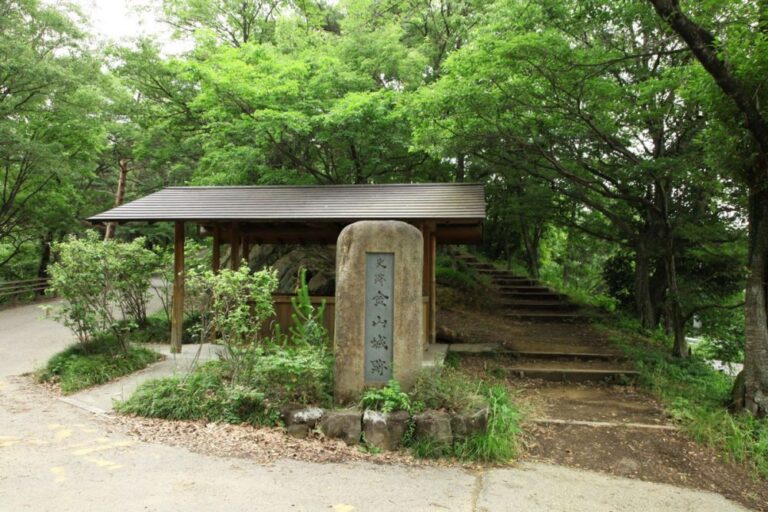In the city of Ota in Gunma, you can find the ruins of an original Japanese castle, the Kanayama Castle Ruins. If you are interested in Japanese history, the site where the castle used to be is a great place to visit. Also if you like off the beaten path spots, the Kanayama Castle Ruins should be on your list.

Kanayama Castle History
Clan head Iwamatsu Iezumi built this castle in 1469. Yokose Narishige, a retainer of the Iwamatsu family, came to rule over it in 1528. Around 1565, the Yokose changed their name to Yura. During the period of the Warring States, Kanayama Castle was attacked several times by some of the strongest powers in the area including Uesugi Kenshin (1574), Takeda Katsuyori (1580), and Satake Yoshishige (1583). It withstood all these attacks demonstrating its tough construction and great location.
During the year 1584, Yura Kunishige and his brother Nagao Akinaga (lord of Tatebayashi Castle) were captured by the Hojo clan of Odawara. In exchange for their release, they turned over the castle to the Hojo clan. During Hideyoshi’s campaign against the Hojo, Maeda Toshiie took over Kanayama Castle in 1590. It was decommissioned and not used after this time.
Kanayama Castle Ruins Today
Kanayama Castle is one of the Top 100 Castles, one of the Seven Famous Kanto Castles, and a National Historic Site. The site used to be called Nittayama, which appears in Manyoshu. This book was the first anthology of Japanese poetry and was edited in the 8th century. Standing out in a field that extends as far as the Kanto Plain, Kanayama has been a major landmark in the area.
It is also well known for its early history and castle. Recently, the ruins were restored. It is now possible to tell what “a mountain castle” of the ancient days looked like. You can trace some of the interesting restored ruins on a hiking course, as well as enjoying the seasonal trees and flowers.
Taking advantage of the geological features, Kanayama Castle was well-fortified and difficult to attack. The pathways are narrow, winding, and tricky. If you attempted to attack the castle, you would be unsure which path to take to get to. Inside at Dobashi Point, you will see an overwhelming wall of stacked-up rocks. Then the path leads you to the left, where you could be attacked in two possible ways; one from platforms in front and from a lookout above.
The Castle Garden
The Moon and The Sun pond in the ruins were used for drinking water. The Sun pond was also used for ceremonies and praying for rain or victory in battle. There is a big Zelkova tree that is over 500 years old at the base of the stairs leading up to The Nitta Shrine. The Watch Tower commands a view of the northeastern area as far as the eye can see. On a clear day, you can see Mt. Akagi, Mt. Haruna, Mt. Myogi, and even Mt. Asama.
Tourists can perceive the imposing scale of the original construction and its historical value. By simply strolling among the ruins of the old stone walls and floors of the fortress you will feel its former greatness. At the foot of the site, there is now a museum about the monument. Observing and translating the story of the stones to fit it into its historical and geographic context, it is an interesting place to visit.
In 2006 the Japanese town of Ota appointed famous architect Kengo Kuma to design a cultural center and museum dedicated to the famous Kanayama Castle. Kuma’s architecture weaves a two-dimensional fabric of stone made up of two types of patterns. It is integrated and multiplied to cover all of the cement building housing the museum’s collections and hosting activities centering on the castle.
Are you interested in Japanese history or want to have an adventure outside the bustling tourist sites? Visiting the ruins of Kanayama Castle should be on your itinerary!
Your Japan Tour
As seasoned Japan experts, we create perfect Japan package tours including off-the-beaten path destinations. Check out our group tours and private tours, or contact us to start planning your unforgettable holiday to this fascinating country. Japan is full of once-in-a-lifetime experiences, culture, history, nature, and delicious food!